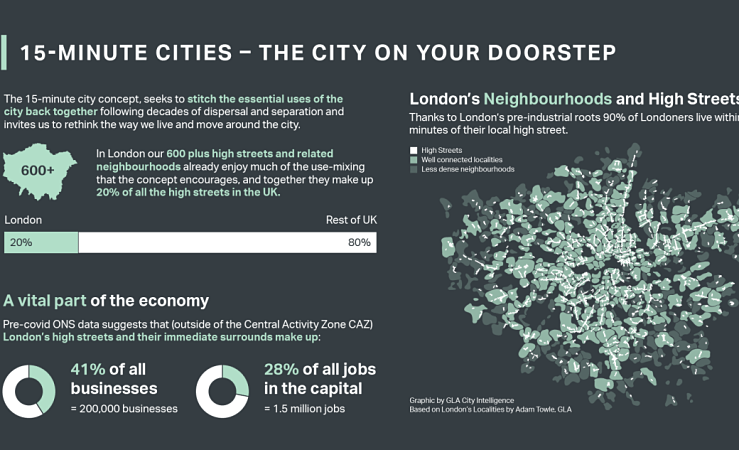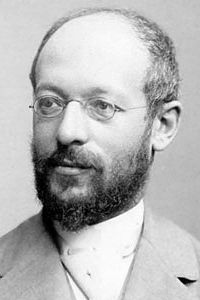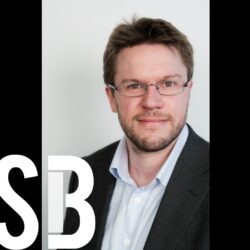COVID, Simmel and the Future of Cities

One of the problems about being a distinguished German sociologist is that your work is so often translated into English with little attention to its readability. The grammatical structures of German allow for sentences to be much longer and more complex than those in English – and for the creation of compound nouns that point in several different directions at once. Sociologists are, of course, notorious for then trying to reproduce this style in their own writing! However, this does then mean that the impact of the original can be diluted or even misconstrued, as in the notorious example of Parsons’s translation of Max Weber’s stahlhartes gehaüse as ‘iron cage’.
One particular loss in the present emergency is Georg Simmel’s discussion of the case for cities, in his 1902 essay “The Metropolis and Mental Life.” Despite rival translations in the 1940s, by Edward Shils and by Hans Gerth and C. Wright Mills, it is not an easy read. However, it presents crucial arguments against the break-up of urban life that is envisioned by some contemporary Utopians: the case against the 15-minute city needs to be heard.

Simmel composed this lecture against the background of a critique of cities from late 19th century conservative writers. Cities were seen as dark, dangerous and unhealthy places, where human beings lost touch with their nature. People became restive and disruptive, challenging the existing social order of church and social hierarchy. They were prone to fickle mass behavior in mobs, crowds and demonstrations. Societies would be much better if they could return to a more pastoral way of life, not necessarily entirely in the countryside. Model villages or garden townships could house workers close to their factories, where paternalist employers could exclude corrupting influences like pubs and promote civilizing cultural pursuits. Every house would have its own green space or access to an allotment or community garden so that healthy workers could grow their own fresh produce. Trades unions would be barred and co-operative staff associations encouraged. The pre-industrial peasant would be re-invented as the deferential worker.
As numerous social historians have pointed out, this was a fantasy version of rural life. Agricultural labor was hard, poorly rewarded and unhealthy in different ways. The houses of the laboring poor were little more than mud huts and their food supplies were seasonal and erratic. Despite the challenges of living in major cities, people have flocked to them for as long as anyone can document.
This puzzled the conservatives, whose social circles were, of course, those of the landowners – the Downton Abbey version of history that airbrushed the precarious nature of employment, the overcrowded accommodation and tuberculosis deaths, and the everyday experiences of sexual and racial harassment. Simmel provides some of the explanations, and in doing so, demonstrates why the 15-minute city is a pernicious idea.
For Simmel, the strengths of cities were precisely the things that frightened conservatives. Actions were not constrained by traditional relationships and community surveillance. In the anonymity of the city, a new kind of mental life was possible where the superficiality of interactions created a space for privacy and for personal reinvention. You might be the only gay in your village: in the city, you could be part of a gay neighborhood, associate with like-minded people, and create a market for products and services to support your preferences. You were no longer strangled by the fate of your birth but free to make of yourself what you could. The market economy liberated you from seasonal scarcity and the quirks of others – with money as a neutral medium of exchange, you could deal impersonally rather than depending upon the goodwill of the village traders and their moral judgements.
This personal liberation was the foundation for innovation. New social groups created new demands and new niches in the division of labour to support them. City living drove new technologies and services as people competed to gain an edge in the market economy. Simmel gives the example of the professional diners in Paris – if a guest failed to appear, meaning 13 at a dinner table, a diner could be engaged in an instant, complete with appropriate dress, manners and conversation, to avert the ill-luck that would otherwise be risked. More broadly, Simmel identified what we might now call agglomeration effects, that the juxtaposition of diverse interests, random meetings and market pressures pushed innovation forward. Later writers would discuss the ways in which cities changed our sense of time, thrusting forward into the future rather than looking to the past or the recurring rhythms of seasonality.
Cities were also the foundation of cosmopolitanism, which was another reason why conservatives disliked them. While they provided niches for people to associate with those like themselves, urban life inevitably also forced encounters with people who were different. The very superficiality of these encounters defused the tensions that difference provoked in rural communities: strangers were not to be feared but to be engaged with and perhaps welcomed. Urban cultures were an amalgam of influences that were not the unique property of any group.
For Simmel, then, the quality of life in the city compensated for the material limitations – crowding, pollution, infectious disease and so on. Cities were exciting, dynamic places where the future was always happening.
The 15-minute city is often seen as a project of the left or of Green thinking – but it is, in fact heir to the conservatives that Simmel opposed. A city of self-sufficient neighborhoods or urban villages is a city that loses most of the things that make urban life worthwhile. If we are not working from home, we are spending time at an office hub or a local factory, mixing with people like ourselves. My own neighborhood is almost exclusively white, with a few South Asian professional families who have been attracted by the larger housing capable of accommodating multi-generational households. Where is the challenge of diversity?
What happens to innovation in the 15-minute city? We have yet to find a satisfactory online alternative to physical agglomeration. What is the equivalent to the social settings where people with different skills hang out, interact and spark ideas? If university education moves online, it becomes mere instruction, the reproduction of knowledge and skills rather than the frictional engagement that provokes novel thinking. A senior partner in a large local law firm confided to me her worries about the loss of collective problem-solving and shared learning among her assistants. They brought their challenges to her because the isolation of the virtual world did not allow them to brainstorm in the same way as an open-plan office. Do we really want to be frozen in time and slow to adapt as the world around us changes?
If you are in a certain class at a certain career stage with a certain kind of family, 15-minute living may be very cozy. Simmel encourages us to think about whether this is a fundamentally selfish notion whose costs have been concealed by its advocates.


























































































